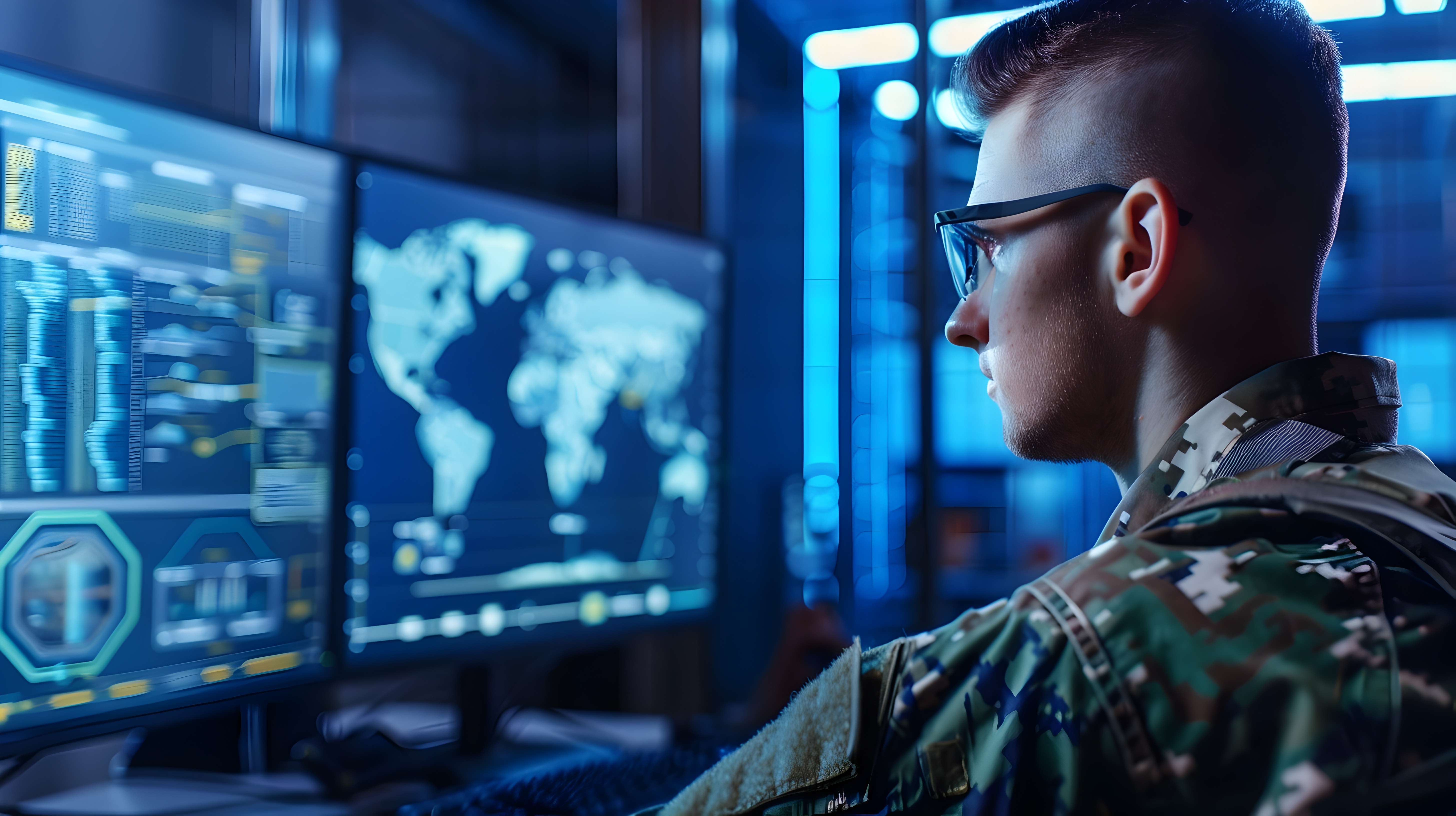Quantum Machine Learning (QML), the intersection of quantum computing and machine learning, is poised to transform mission-critical defense operations by introducing new capabilities to sense, analyze, and respond in complex environments. Defense organizations increasingly deploy QML to address challenges that demand unprecedented speed and accuracy, especially where data is high-dimensional or sparse.
Below are five validated use cases illustrating how QML is becoming a core enabler in modern defense strategies.
1. Predictive Maintenance of Defense Vehicles and Aircraft
Proactive maintenance is essential for operational readiness, with significant advancements made in quantum-powered health monitoring that improve early fault detection.As shown in our blog on Quantum‑Powered Health Monitoring & Predictive Maintenance for Armoured Fighting Vehicles (AFVs), QML-driven anomaly detection achieves ~97% accuracy with minimal training parameters and iterations, enabling early fault detection before escalation
Quantum Machine Learning Solutions:
- Early detection of micro-cracks, surface defects, and component fatigue using QML-driven pattern recognition techniques.
- Enhanced anomaly detection models process sensor and image data from aircraft fuselages and key systems, improving the identification of potential points of failure before they escalate.
- Reduction in unplanned downtime as QML models optimize maintenance schedules and extend asset life.
Example Table: Accuracy Improvement with QML in Defect Detection
2. Real-Time Recognition of Enemy Installations: Drone & Satellite Image Analysis
Timely intelligence about enemy assets underpins defense decision-making. Accurate, real-time detection and classification using remote sensing data remains central to strategic operations.
Quantum Machine Learning Solutions:
- Rapid classification of satellite and drone imagery benefits from hybrid quantum machine learning models that improve accuracy in complex defense ISR missions. In our post on Quantum Machine Learning in Aerospace & Mission‑Critical Applications, we detail how hybrid QML models dramatically improve classification accuracy in high‑dimensional scenarios, like hyperspectral image analysis in defense ISR missions.
- QML models outperform classical systems in high-dimensional hyperspectral imaging tasks, identifying subtle features with greater accuracy.
- Automated image labeling and recognition with fewer reference samples accelerates the warning cycle and response.
Key Benefits:
- Rapid update cycles, providing intelligence units with near-instant situational awareness.
- Support for multiple sensor types and imaging modalities.
3. Surveillance and Monitoring: Anomaly Detection at Scale
Persistent surveillance across dynamic environments—borders, maritime zones, or conflict areas—requires advanced anomaly detection.
Quantum Machine Learning Solutions:
- Detection of abnormal movement patterns or behaviors using QML-enhanced AI, which learns from scarce or incomplete data.
- Adaptive learning allows identification of suspicious activities that might be missed by traditional systems, including low-observable vehicles or clandestine personnel.
- Integration with existing sensor networks to flag anomalies in real time, reducing false positives and improving operator focus.
Sample Use Cases:
- Tracking irregular vehicle convoys along disputed borders.
- Identifying non-standard vessel movements in maritime domains.
4. Real-Time Analysis of Images from Drones and Satellites
Rapid-processing capabilities are crucial in intelligence, surveillance, and reconnaissance (ISR) missions, especially when assessing large volumes of visual data.
Quantum Machine Learning Solutions:
- Analyzing drone and satellite feeds for human activity, vehicle presence, or abnormal heat signatures.
- Improved pattern recognition for multi-sensor and multi-modal imagery, resulting in more comprehensive operational pictures.
- Support for fused data platforms that combine inputs from infrared, visible spectrum, and radar sensors.
Table: QML Impact on Mission-Critical ISR
5. Object Recognition and Automated Threat Prioritization
Accurately recognizing and classifying military objects in mixed operational environments remains a challenge for human analysts and conventional AI systems.
Quantum Machine Learning Solutions:
- Automated threat recognition leverages hybrid quantum transfer learning, achieving higher accuracy even with occluded or camouflaged targets.
- Automation of threat prioritization enables defense teams to rapidly assess and respond to the most significant threats.
- Supports scalable integration with command-and-control platforms for streamlined operational workflows.
Benefits:
- Reduces analyst workload by filtering noise from large datasets.
- High reliability even with limited annotated samples.
Industry Perspectives and Strategic Adoption
Defense and intelligence agencies report significant progress in QML pilot projects, particularly in airborne platforms and cyber-physical system monitoring. The global "quantum race" continues to incentivize investments by both technology vendors and government programs, as staying ahead in QML capability is seen as critically important to maintaining a technological edge.
- Early QML deployments are delivering measurable improvements in classification accuracy, decision timeliness, and resilience against data scarcity.
- Continued advancements rely on collaboration between defense agencies, quantum technology startups, and academic researchers.
- Adoption challenges include the need for quantum-ready infrastructure and skill development, but demonstrable value in pilot projects is accelerating mainstream acceptance.
Ready to Operationalize Quantum ML in Your Defense Stack?
Want to see what this looks like for your specific mission needs?
Book a personalized demo and explore how QML can accelerate operational advantage.
Conclusion
Quantum Machine Learning is actively reshaping mission-critical defense capabilities. From maintaining the airworthiness of advanced military aircraft to detecting the subtlest threats in ISR operations, QML consistently demonstrates enhanced accuracy, speed, and adaptability. Defense organizations prioritizing these innovations are better equipped to safeguard personnel, assets, and national interests in an increasingly unpredictable world.





.png)
.png)
%20365382.png)




.svg)
.svg)
.svg)
.svg)